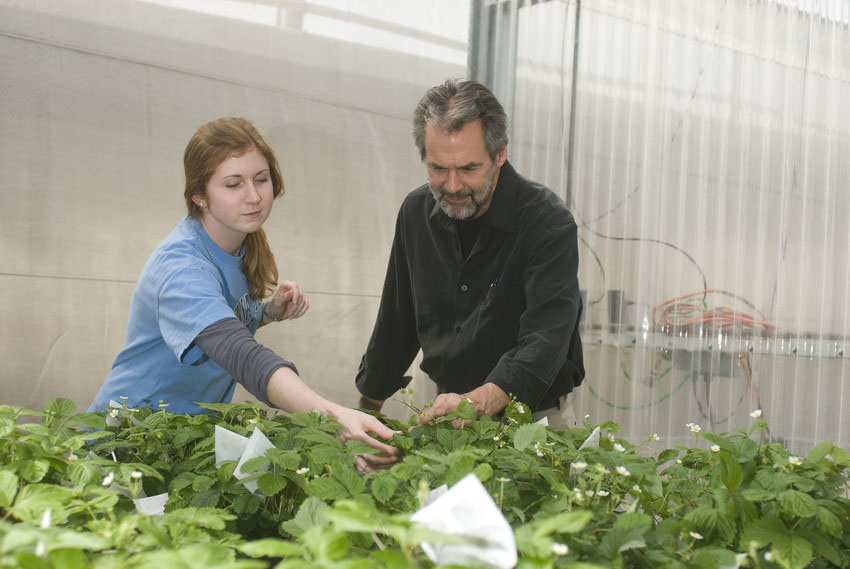Virginia Tech researchers contribute to strawberry genome sequence

An international consortium of researchers from more than 30 institutions, including scientists at the Virginia Bioinformatics Institute at Virginia Tech and the horticulture department in the College of Agriculture and Life Sciences at Virginia Tech, has cracked the genetic code of the woodland strawberry.
The research is the cover story of the February issue of the journal Nature Genetics, in the article "The genome of woodland strawberry (Fragaria vesca)."
As part of their findings, the scientists identified genes that they think might be responsible for such characteristics as flavor, aroma, nutritional value, flowering time, and response to disease. The researchers hope having sequenced the strawberry's genome will spur the development of nutritional improvements in the woodland strawberry and other related crops. The woodland strawberry, an ancestor of cultivated strawberry with fewer chromosomes and simpler inheritance, is a member of the Rosaceae family, which includes many fruit species, from apples, plums, peaches, and pears to raspberries, sour cherries, and sweet cherries.
Vladimir Shulaev, former professor with the Virginia Bioinformatics Institute now at the University of North Texas, and Richard Veilleux, the Julian and Margaret Gary Professor of Horticulture at Virginia Tech, worked to assemble the international consortium of scientists who contributed financially and intellectually to the project.
Horticulture Ph.D. students Sarah Holt of Charlotte, N.C., and Juan Jairo Ruiz-Rojas of Cali, Colombia, worked on isolating high quality DNA for sequencing, "a difficult endeavor because of the many contaminants that hinder DNA extraction from strawberry leaves," said Veilleux, co-advisor for the students with Shulaev. Ruiz-Rojas worked for three months in the UK lab of co-author Dan Sargent to populate the strawberry genetic map with sufficient markers to be able to place the nucleotide assemblies into the proper order, said Veilleux.
With 14 chromosomes, the woodland strawberry contains a total of 206 million base pairs of DNA, necessitating next-generation sequencing power for completion. Virginia Bioinformatics Institute Core Laboratory Facility rapidly generated the complete sequence of the woodland strawberry genome using its Roche GS-FLX™ next-generation genome sequencer.
"The strawberry genome assembly provides a resource for mining genes related to agronomic characters. We hope this research will lead to improved fruit varieties in the future," said Veilleux.
Other Virginia Bioinformatics Institute researchers involved in the project include Shrinivasrao Mane, computational biologist; Clive Evans, director of the Core Laboratory Facility; João Setubal, associate professor; Kelly Williams, visiting collaborator; Allan Dickerman, assistant professor; Roderick Jensen, professor of biological sciences at Virginia Tech, former director of the Core Laboratory Facility; Otto Folkerts, former associate director of technology development, now at Chromatin Inc.; and Oswald Crasta, former cyberinfrastructure group co-director, also now at Chromatin.
Barry Flinn, adjunct professor of horticulture at Virginia Tech and director of the Institute for Sustainable and Renewable Resources at the Institute for Advanced Learning and Research in Danville, was also a partner in the research and supported the project with funds from U.S. Department of Agriculture.
Dedicated to its motto, Ut Prosim (That I May Serve), Virginia Tech takes a hands-on, engaging approach to education, preparing scholars to be leaders in their fields and communities. As the commonwealth’s most comprehensive university and its leading research institution, Virginia Tech offers 240 undergraduate and graduate degree programs to more than 31,000 students and manages a research portfolio of $513 million. The university fulfills its land-grant mission of transforming knowledge to practice through technological leadership and by fueling economic growth and job creation locally, regionally, and across Virginia.




